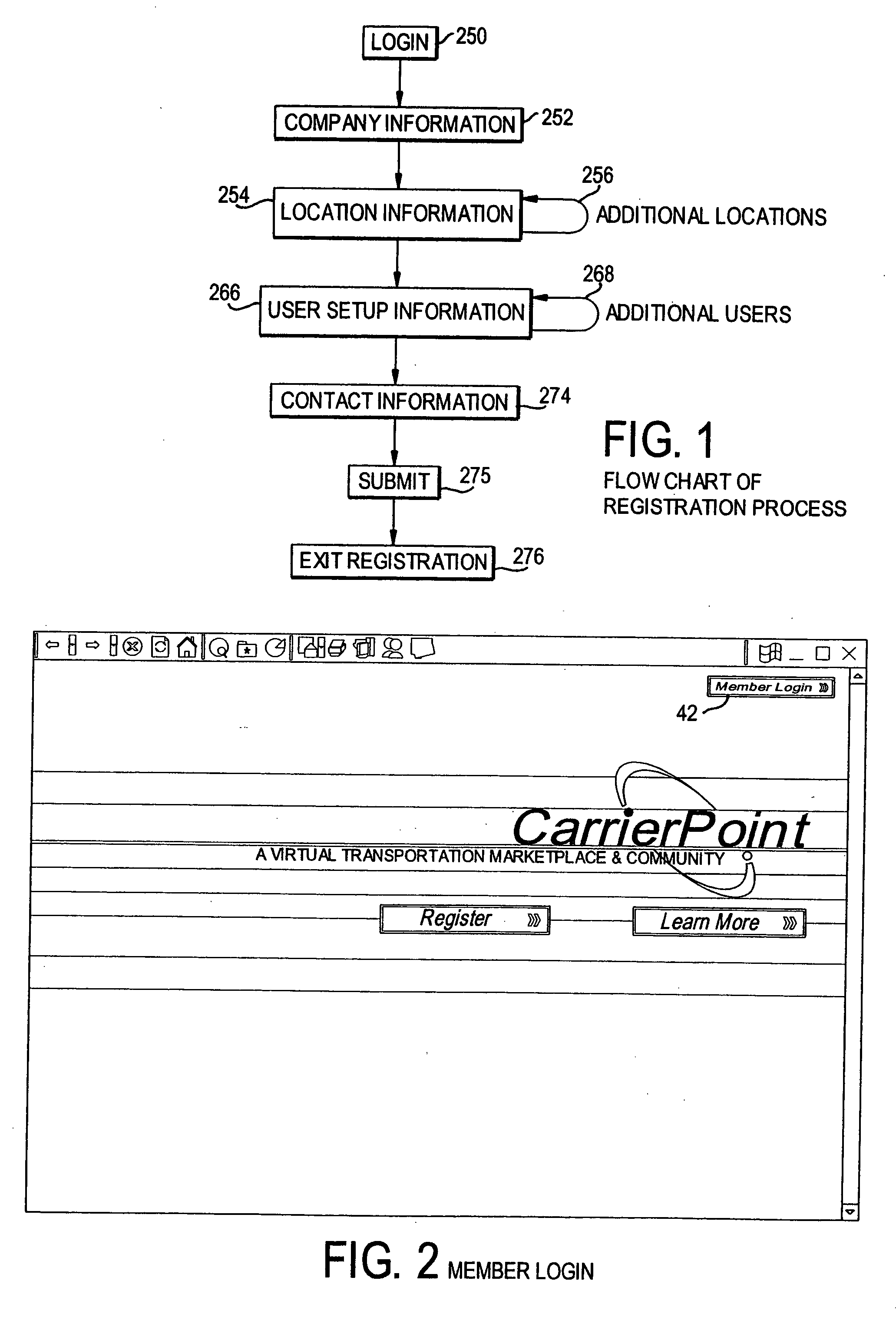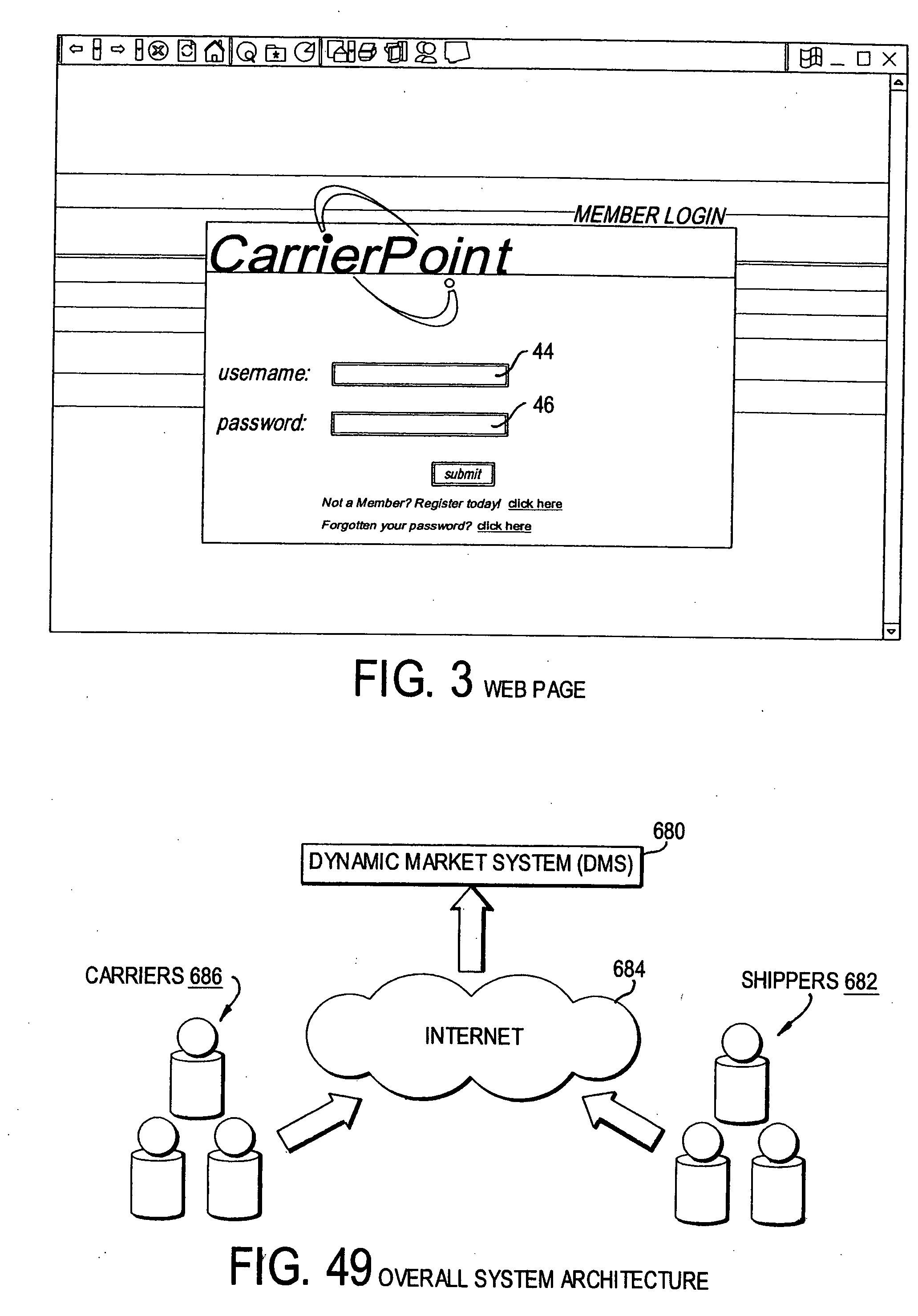Computer based system and method for facilitating commerce between shippers and carriers
a computer-based system and carrier technology, applied in the field of electronic commerce, can solve the problems of underutilized capacity for both of these segments, ongoing costs associated with the use of an edi system, shippers and carriers that employ edi technology, etc., and achieve the effects of facilitating selection, reducing uncertainty associated with the traditional freight billing process, and facilitating search for carrier capacity
- Summary
- Abstract
- Description
- Claims
- Application Information
AI Technical Summary
Benefits of technology
Problems solved by technology
Method used
Image
Examples
Embodiment Construction
[0102] Generally speaking, the system and method of the present invention provides shippers and carriers a network enabled marketplace for coordinating the transportation of freight and streamlining logistical operations. The Dynamic Market System (“DMS”) of the present invention is a transportation marketplace that permits shippers and carriers to interact with each other in a real time environment. It matches shippers and carriers based on multi-variant criteria selected by one or more parties to the shipping transaction. It provides a marketplace rather than an auction environment. With respect to the present invention, price does not have to be the sole determining factor in awarding shipments to carriers. Instead, the DMS forwards all qualifying carrier fulfillment offers to the shipper so that the shipper can award the shipment to the carrier offering the best price / quality / service mix.
[0103] In accordance with the system and method of the present invention, shippers are able...
PUM
 Login to View More
Login to View More Abstract
Description
Claims
Application Information
 Login to View More
Login to View More - R&D
- Intellectual Property
- Life Sciences
- Materials
- Tech Scout
- Unparalleled Data Quality
- Higher Quality Content
- 60% Fewer Hallucinations
Browse by: Latest US Patents, China's latest patents, Technical Efficacy Thesaurus, Application Domain, Technology Topic, Popular Technical Reports.
© 2025 PatSnap. All rights reserved.Legal|Privacy policy|Modern Slavery Act Transparency Statement|Sitemap|About US| Contact US: help@patsnap.com



